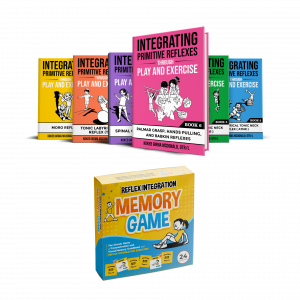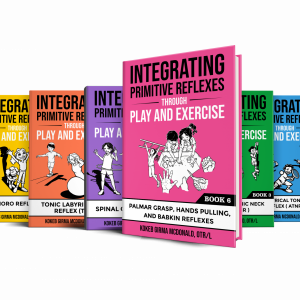Engaging young children with developmental delays in classroom activities can be challenging. These children often face difficulties in understanding social norms, transitioning between activities, and participating in group tasks. As occupational therapists (OTs), we strive to create supportive and inclusive environments that encourage every child’s participation. One effective tool we can use is social stories. This blog post will explore one way I used a social story to help a young child with developmental delays engage in classroom settings.
Check out the video I made to learn more about this social story.
Understanding the Child’s Needs
Before introducing any interventions, it’s crucial to understand the child’s preferences, strengths, and areas of difficulty. In the case study, a kindergartner with Down Syndrome and speech delay exhibited challenges in participating in classroom activities. The child often showed reluctance to engage and had trouble understanding classroom routines.
The first step was to observe the child’s behavior in the classroom. The child enjoyed imaginary play, often pretending to be a superhero. This insight became a key element in crafting an engaging and relatable social story.
Creating a Social Story
Social stories are personalized narratives that explain social situations and appropriate behaviors in a way that children can understand. They often include images and simple language to make the concepts more accessible.
For the child in the case study, I created a social story titled “Getting Ready to Learn and Play”. The story featured a character that resembled the child, complete with a favorite hairstyle and a relatable setting. The narrative guided the child through daily routines, such as arriving at school, putting away belongings, and participating in class activities.
Key Elements of the Social Story
- Personalization: The story was tailored to reflect the child’s experiences and interests. The character’s likeness and the inclusion of superhero elements made the story more engaging.
- Simple and Clear Language: The language used was straightforward, focusing on key actions and emotions. For instance, the story described the excitement of arriving at school and the steps to follow when entering the classroom.
- Visuals and Imagery: Images were incorporated to help the child visualize the steps and actions described. This was particularly helpful in explaining abstract concepts like “ready to learn power,” symbolized by an imaginary tiara.
- Positive Reinforcement: The story emphasized positive behaviors and their benefits, such as “I feel excited to start my day” and “I use my ready-to-learn power to help me pay attention and do my work.”
- Incorporating Interests: Recognizing the child’s interest in superheroes, we introduced the concept of a “thinking cape” and “ready to learn power.” These imaginative elements helped the child connect with the narrative and understand the expected behaviors.
Implementing the Social Story in the Classroom
Once the social story was developed, I introduced it to the child in a supportive and engaging way. The child was invited to read the story together, both inside and outside the classroom, creating a comfortable and familiar experience. This approach allowed the child to gradually understand and internalize the classroom routines and expectations.
I also collaborated with the teacher to incorporate the social story into the daily classroom schedule. The teacher used the story to guide the child through transitions and reinforce positive behaviors, such as sitting nicely, following instructions, and participating in group activities.
Observing and Adjusting
As the child interacted with the social story, I monitored the child’s comprehension and engagement. For instance, the child showed understanding by nodding and responding positively to the character’s actions in the story. However, some concepts, like certain playground activities, were unfamiliar to the child, indicating areas that needed further exploration or a different approach.
Based on these observations, we considered breaking the story into smaller, more digestible parts or creating additional stories focusing on specific routines or challenges. This iterative process ensured that the social stories remained relevant and effective in supporting the child’s development.
Wrapping it Up
Social stories are a valuable tool for OTs working with young children with developmental delays. By providing a clear and relatable narrative, these stories can help children understand and navigate the complexities of classroom routines and social interactions. The success of a social story depends on careful observation, personalization, and ongoing adjustments based on the child’s responses.
By using the child’s interests and strengths, we created a positive and supportive learning experience. As pediatric therapists, our goal is to foster a sense of belonging and competence in every child, and social stories are a powerful way to achieve this in the classroom setting.
Check out the social story I used and referenced in the video.





